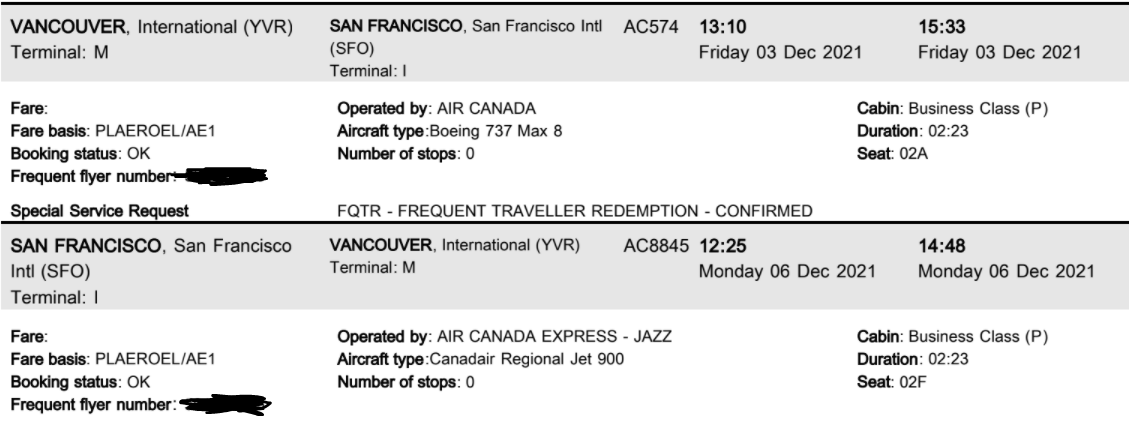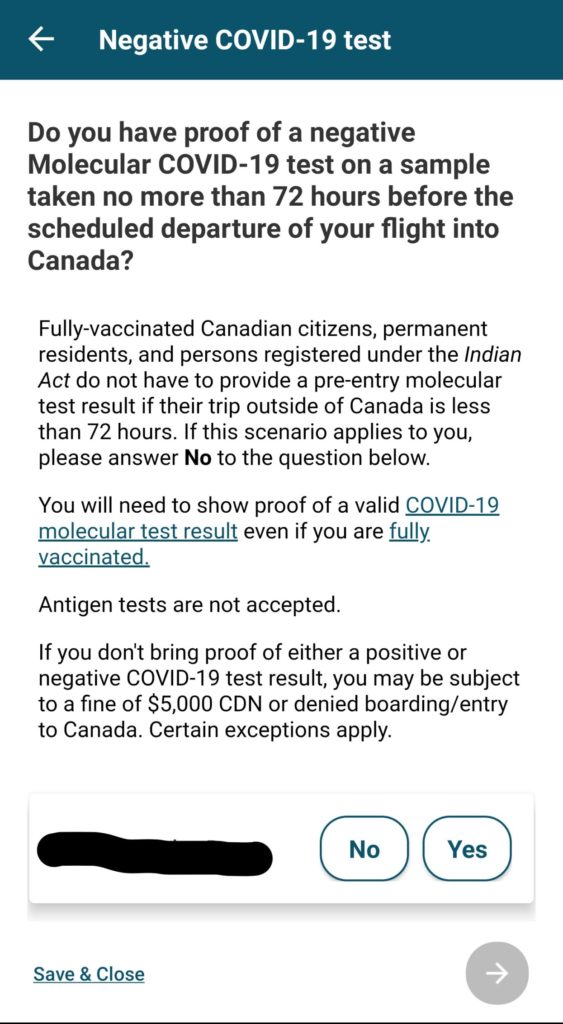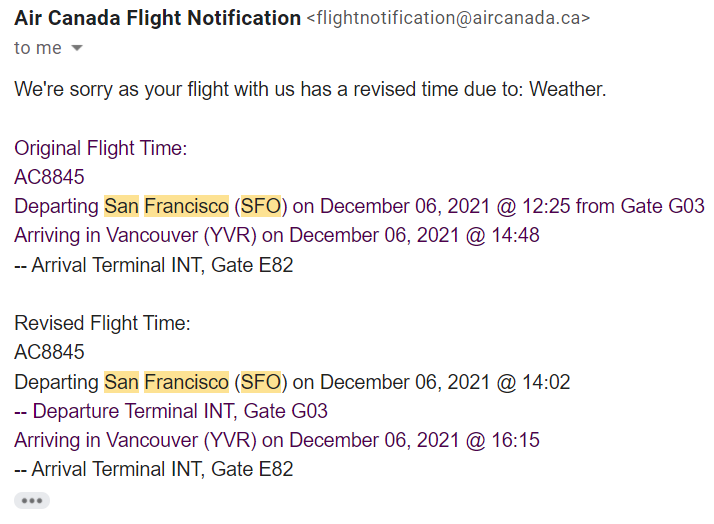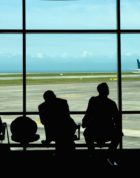I recently made a short trip from British Columbia to California to run a marathon. This was my first trip to the United States since Ricky and I went to New Orleans in February 2020.
This was also the first time I’d be navigating the American and Canadian COVID-19 restrictions, which had both recently changed.
Of particular interest to this trip was the exemption from the pre-entry COVID-19 molecular test for travel back to Canada on trips less than 72 hours.
I often see people confused over the constantly changing rules, so in this article, I’ll go over my experience with leaving and coming back to Canada within 72 hours.
Preparing for the Trip
When I booked my flights back in September, and in the weeks leading up to my trip, the regulations for entry to the United States and returning to Canada hadn’t changed.
For the COVID-19 testing requirements, I needed an antigen test within three days to get into the US, and a molecular test within 72 hours to get back into Canada.
I ordered a Switch Health Rapid Antigen Test kit for my trip to the United States and a Switch Health RT-LAMP Test kit for my return trip to Canada.
These portable testing options are particularly useful to me as I live in a COVID-19 testing desert and would otherwise have had to drive to a clinic 1.5 hours away to get tested. I’d also much rather not take hours out of my day to do something that could otherwise be done at home.
Further, as test results within one day of travel are now required to enter the United States, having a fast turnaround time for test results is important more so now than ever.
Changes to Canada’s Testing Rules for Short Trips
The Canadian government recently announced changes for travellers on short trips. As of November 30, 2021, individuals who leave and return to Canada within 72 hours are no longer required to show proof of a negative molecular test result.
After reading through the announcement, I had a look at my flight schedule. My flight to San Francisco was set to depart on Friday at 1:10pm, and my flight from San Francisco to Vancouver was set to depart at 12:25pm on Monday afternoon.
Depending on how the 72-hour window was calculated, I’d either be exempt, or still required to have a negative test. Since I had ordered my molecular test already, I was prepared, but I’d rather not have to use it if I didn’t have to.
I’ve noticed that news stories covering these changes usually don’t dive into enough detail. So, I headed straight to the Order in Council to see if I could find more information.
The Order in Council specifically states that the 72-hour period is calculated from the original scheduled departure time of your flight leaving Canada to the original scheduled departure time of your return flight back to Canada. The information was also recently updated on the Government of Canada website.
To my delight, this excluded me from a pre-entry molecular test requirement for Canada, as I was set to be gone for a very satisfying 71 hours and 15 minutes. I wish I could say that I did this on purpose, but in fact it was just pure luck.
So, even though I was going to be physically outside of Canada for more than 72 hours, as per the Government of Canada’s guidelines, I was considered to be gone for less than 72 hours.
I was travelling with a small group of people with whom I shared this information. But, I wanted to be sure that we wouldn’t need a return test, as I’d feel awful if I put our group in a tricky situation.
As I’ve done many times over the course of the pandemic, I gave the Government of Canada Coronavirus Hotline a call. The vast majority of agents I’ve spoken with are knowledgeable and thoroughly look into situations. They also provide you with guidance on where to find the information you’re looking for so you can share it with others.
They confirmed my understanding of the exemption and also addressed my questions about flight delays that would push us over the 72-hour mark. Once again, to my delight, they confirmed that it’s the original scheduled departure time that counts, and not the actual departure time.
So, even if a flight delay pushes you over the 72-hour exemption window, you won’t be required to scramble for an expensive last-minute test at the airport.
Note that the rules for crossing a land border are a bit different. The 72-hour period is calculated from the time you entered the United States to the time you re-enter Canada.
Therefore, anyone planning on driving across the border should be mindful of delays at the border that may push them over the 72-hour mark.
Our Experience Returning to Canada
As I was filling out my arrival information on the ArriveCAN app, there was a question that asked me to self-declare if I was exempt from a pre-entry test with the 72-hour rule. Note that you should always ensure you have the most up-to-date version of the app prior to submitting your information.
On the page that asks you about your proof of a negative test, if you are exempt due to the 72-hour requirement, simply answer “No” to the question on this page.
As this exemption was relatively new when I travelled, I was interested to see if the check-in agents would be familiar with it.
At check-in, the Air Canada agent asked me for my proof of vaccination, ArriveCAN receipt, and negative test results. I mentioned to her that I was exempt from the test requirement having been gone for less than 72 hours.
She looked a bit puzzled at first, but after clicking a few buttons on her computer, she confirmed that I was indeed exempt. I had a copy of my original flight itinerary in case I needed to show proof.
My fellow travellers who checked in a bit later had to have a discussion with their check-in agent, as she wasn’t aware of the exemption. After some polite discussion and consulting with her colleagues, she checked them in without issue, too.
It turns out that our flight from San Francisco to Vancouver was delayed due to bad weather, which affected the departure of our inbound aircraft. This pushed our actual departure time from 1:10pm to around 2pm – one hour over the 72-hour threshold.
Even though I was certain that the exemption would hold as it is the originally scheduled departure times that count, I felt a bit uneasy after hearing how inconsistently border rules are applied.
I was prepared to engage in a discussion about the testing exemption and had the required evidence, but the border officer quickly processed me and sent me hobbling to catch my flight.
Everyone else was processed in a similar manner and we all caught our connecting flight back to Vancouver Island, which, thankfully, had also been delayed due to weather. Having just run a marathon the day before, we were grateful to have a bit of extra time to get to the gate.
Conclusion
On news articles and social media, I often read horror stories of travellers’ experiences at the airport and border. Passengers are subject to ever-changing entry restrictions, which are then interpreted and applied at numerous levels, leaving multiple opportunities for errors.
With how frequently governments are changing entry requirements, it’s not surprising that there are misunderstandings. Unfortunately, these misunderstandings sometimes result in large fines, periods of self-isolation, or at the very least, frustration.
In my experience, such as with my recent 71.25-hour visit to the United States, it’s best to consult official government sources leading up to your travel date.
The information can be difficult to sift through but having a thorough understanding of what you do (and don’t) need to do can save you time, money, and sanity.



















Unfortunately, this 72-hour exemption has now been taken away. Well, it was fun while it lasted!
Thanks TJ for sharing – fantastic article. Not surprised there was some confusion with check-in agents, but it is to be expected with any of these changes.
Heading to Vegas this weekend for a 48 hour trip so hoping my experience is as smooth as yours!